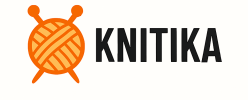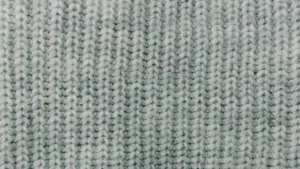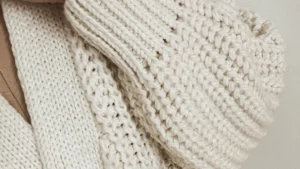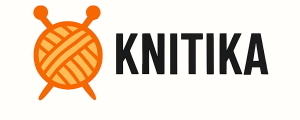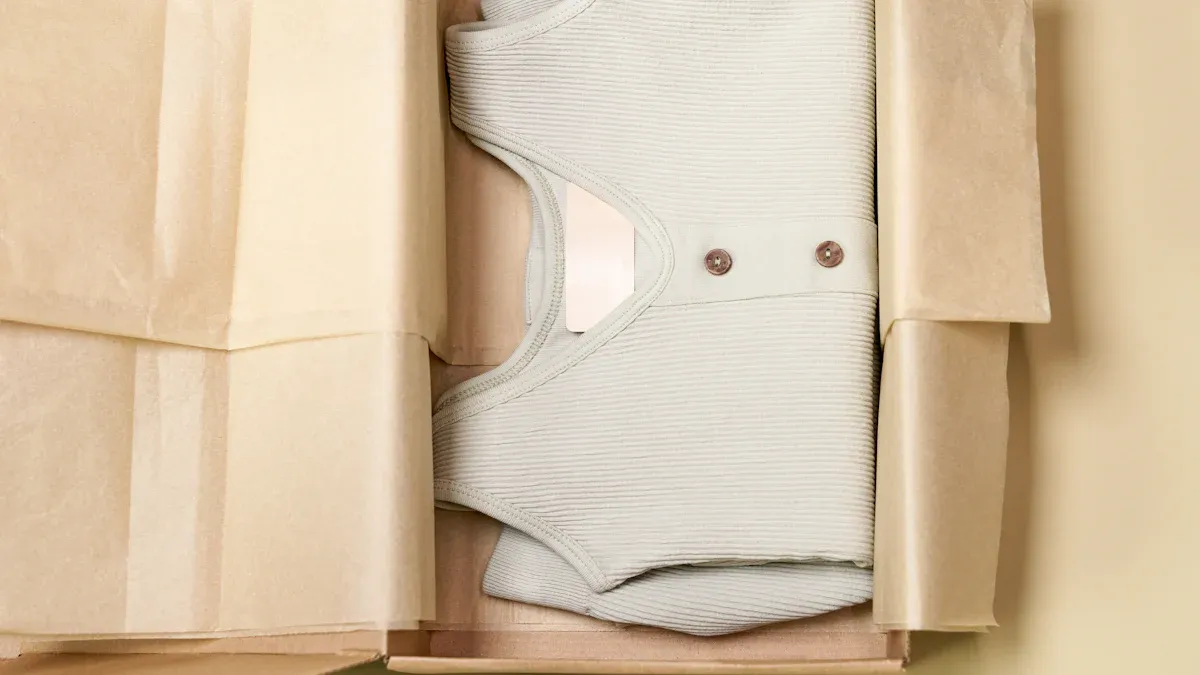
Import taxes are important for planning costs for knitwear shipments. Knowing how to calculate import tax helps follow rules and avoid surprises. These calculations depend on factors like product type, value, and trade deals. For instance, the Harmonized Tariff Schedule (HTS) determines the tax rate. The total value, including shipping and insurance, affects the duty owed. The U.S. Census Bureau states that duties come from Customs records, so accurate paperwork is essential. By learning these steps to calculate import tax, you can make importing easier and manage costs more effectively.
Key Takeaways
Learn about import tax to avoid surprise costs when shipping knitwear.
Use the right HS code for your knitwear to get correct tax amounts and avoid fines.
Report the full value of your shipment, including shipping and insurance, to calculate taxes properly.
Check trade agreements that might reduce taxes for your knitwear shipments.
Use online tax tools or customs experts to make tax calculations easier.
Understanding Import Tax and Customs Duties
What Is Import Tax?
Import tax is money paid to bring goods into a country. It applies to items like knitwear when shipped across borders. This tax helps imported goods support the economy, like local products do. For example, shipping to the U.S. may include an import tax. The tax depends on the value, type, and origin of your knitwear.
What Are Customs Duties?
Customs duties are taxes charged on goods during import. These depend on the product’s category under HS codes. For knitwear, duties are usually between 12% and 17%. See the table below:
Statistic | Value | Time Period |
|---|---|---|
Average U.S. apparel tariff rate | Jan 2015 – Nov 2024 | |
Average price increase of U.S. apparel imports | 6% | Jan 2015 – Nov 2024 |
Average increase in U.S. apparel retail price | 4% | Jan 2015 – Nov 2024 |
These duties raise import costs and affect retail prices. For example, higher tariffs can increase retail prices within two months.
Why Are Import Taxes and Duties Necessary?
Import taxes and duties protect local industries from cheaper foreign goods. In 1995, U.S. textile and apparel jobs totaled 1.6 million. But cheaper imports reduced local production. Duties make imported goods less competitive in price.
These taxes also give governments money and enforce customs rules. Businesses shipping to the U.S. must know these costs to avoid surprises or delays.
Tip: Check knitwear tariff rates and use tax calculators to plan costs.
Key Factors That Affect Import Taxes for Knitwear
Product Classification and HS Codes
How your knitwear is classified under HS codes affects import taxes. HS codes are numbers used worldwide to group products for customs. Using the right code ensures you pay the correct tax amount.
Description | |
|---|---|
Accurate Classification | Ensures correct duties are applied, preventing overpayment or underpayment. |
Misclassification Consequences | Can lead to financial penalties and unexpected tariff rates. |
If you classify knitwear as something else, like electronics, you may pay more. This mistake can cause fines and surprise costs at customs. Using the right code saves money and avoids shipping delays to the U.S.
Tip: Use online tools or ask customs experts to check HS codes. This helps you follow rules and calculate taxes correctly.
Country of Origin and Trade Agreements
Where your knitwear is made changes the taxes you pay. Trade deals between countries can lower or remove these taxes. For example, some U.S. trade deals allow knitwear to enter with reduced tariffs.
In 2017, the U.S. imported $109.5 billion in textiles and paid $12.6 billion in tariffs. This was an average rate of 11.5%. Knitted clothing often had tariffs over 14%. Rates depend on whether the exporting country has a free trade deal with the U.S.
Note: If trade deal benefits expire, importing from places like Bahrain may cost more. Check trade agreements to find ways to save on taxes.
Declared Value of Goods
The value you declare for your knitwear shipment affects the taxes owed. Customs uses this value to decide the duties and taxes. It includes the cost of goods, shipping, and insurance.
CIF (Cost, Insurance, and Freight) includes all shipping costs.
FOB (Free on Board) only includes the product’s cost, not shipping.
The OECD database shows how these costs affect trade. But only 30 countries share full CIF and FOB data, leaving gaps in information.
Tip: Make sure your shipment’s value is documented correctly. Wrong values can cause fines or delays when clearing customs for knitwear.
Shipping and Insurance Costs
Shipping and insurance costs are important for import tax on knitwear. Customs use the CIF value (Cost, Insurance, and Freight) to calculate duties. This means the value of your shipment must include goods, shipping, and insurance costs. Knowing how these costs affect duties helps you plan your budget better.
How Shipping Costs Impact Import Taxes
When you ship knitwear overseas, shipping fees add to the taxable value. For example, if your knitwear is worth $5,000 and shipping is $500, customs will calculate duties on $5,500.
Tip: Pick a shipping method that balances cost and speed. Air freight is fast but costly, while sea freight is cheaper but slower.
Here’s a quick look at shipping methods:
Shipping Method | Cost Range (per kg) | Delivery Time | Best For |
|---|---|---|---|
Air Freight | $4 – $8 | 3-7 days | Urgent shipments |
Sea Freight | $1 – $3 | 20-40 days | Large, non-urgent orders |
The Role of Insurance in Import Duties
Insurance protects your knitwear from damage or loss during shipping. Customs include insurance in the CIF value, raising the taxable amount. For example, if insurance is $200, the total value for duty is $5,700.
Note: Always report accurate insurance costs. Wrong amounts can cause fines or delays at customs.
Strategies to Minimize Shipping and Insurance Costs
Combine Shipments: Send multiple orders together to lower shipping costs per item.
Negotiate with Carriers: Some shippers offer discounts for big or regular orders.
Use Duty-Free Zones: Store goods in free trade zones to avoid duties temporarily.
Compare Insurance Providers: Look for better rates to cut insurance costs.
Pro Tip: Use import tax calculators to estimate shipping, insurance, and duties before ordering.
By managing shipping and insurance costs well, you can lower import taxes for bulk orders. This keeps your knitwear shipments affordable and follows customs rules.
How to Calculate Import Tax for Knitwear Shipments
Find the HS Code for Knitwear
To calculate import taxes, first find the correct HS code. HS codes are numbers used worldwide to classify goods for customs. These codes decide the tax rate for your shipment.
For knitwear, HS codes depend on material, style, and purpose. For instance, wool sweaters have a different code than cotton cardigans. Using the wrong code can cause wrong tax amounts, fines, or delays at customs.
Here’s how to find the right HS code:
Check Online Databases: Use websites like the World Customs Organization or your country’s customs site.
Try Product-Specific Tools: Search for HS codes using tools that match product descriptions.
Ask a Customs Broker: Brokers know customs rules and can help you pick the right code.
Tip: Always confirm the HS code before submitting customs forms. This avoids mistakes and extra costs.
Find the Duty Rate for Knitwear
After finding the HS code, check the duty rate for your knitwear. Duty rates depend on material, origin, and trade deals. For example, wool knitwear from a trade partner may have lower taxes than synthetic knitwear from other countries.
Some ways brands lower duty rates include:
Material Changes: Switching to materials with lower tariffs, like using South Korean fabrics instead of Chinese ones.
Product Design: Making items with blends instead of pure wool to reduce taxes.
Using Technology: Software tools help brands understand tariffs and make better choices.
Duty rates for knitwear are usually between 12% and 17%. Check your country’s tariff schedule or use tax calculators to find the exact rate.
Note: Duty rates can change with new trade deals or policies. Stay updated to avoid surprises when shipping to the U.S.
Calculate Your Shipment’s Declared Value
The declared value of your shipment is key to figuring out import taxes. Customs use this value to calculate the total tax. It includes the product cost, shipping fees, and insurance.
There are two main ways to calculate declared value:
CIF (Cost, Insurance, and Freight): Includes product cost, shipping, and insurance. This is common for international shipping.
FOB (Free on Board): Only includes the product cost, not shipping or insurance.
For example, if your knitwear costs $5,000, shipping is $500, and insurance is $200, the CIF value is $5,700. Taxes will be based on this amount.
Tip: Make sure your declared value is correct and backed by invoices. Wrong values can lead to fines or delays at customs.
By following these steps, you can calculate import taxes for your knitwear easily. Correct HS codes, duty rates, and declared values help you follow customs rules and avoid extra costs.
Apply the Duty Rate to the Declared Value
After finding your knitwear shipment’s declared value and duty rate, calculating the import duty is simple. Multiply the declared value by the duty rate to get the amount owed. For example, if the declared value is $5,700 and the duty rate is 15%, the duty will be $855. This helps you know the exact cost of importing your knitwear.
Tip: Check the duty rate for your product carefully. Rates change based on material, origin, or trade deals. Staying informed avoids surprises.
Use this formula to calculate import duty:
Import Duty = Declared Value × Duty Rate
If your shipment has different items, calculate each product’s duty separately. Add these amounts to find the total duty owed. This method ensures accuracy, especially for knitwear made from wool, cotton, or synthetic blends.
Include Additional Import Taxes
Besides import duty, other taxes may apply to your knitwear shipment. These extra costs can increase your total expenses. Common examples include VAT, excise taxes, and anti-dumping duties. These taxes protect industries or raise government funds.
Examples of Additional Import Taxes
Value-Added Tax (VAT): Many countries charge VAT on imports. It’s a percentage of the total value, including duty. For example, if the total value is $6,555 and VAT is 20%, you’ll owe $1,311 in VAT.
Excise Taxes: These apply to luxury or harmful goods. Knitwear usually avoids excise taxes, but check with customs to confirm.
Anti-Dumping Duties: These stop unfair competition from cheap imports. If your knitwear comes from a country accused of dumping, taxes may be higher.
Real-World Cases of Additional Tax Impacts
Two companies misreported their imports from China, owing millions in unpaid duties.
A women’s clothing importer paid $7.7 million after undervaluing their goods.
These examples show why accurate reporting is important. Mistakes can lead to big fines and hurt your business reputation.
Note: Use tax calculators to estimate all taxes before shipping. This helps you plan costs and avoid surprises.
By knowing about extra import taxes, you can manage costs better and follow customs rules.
Extra Costs to Think About When Importing Knitwear
When bringing in knitwear, there are more costs than just taxes. These extra charges can affect your budget and profits. Below are some important ones to know.
Customs Clearance Fees
Customs clearance fees pay for processing your shipment at customs. These fees change based on the country and how complex the process is. For example, incomplete or wrong paperwork can lead to higher fees.
To lower these costs, make sure your documents are correct. Include the right HS code, declared value, and other needed details. Some customs offices offer faster clearance for an extra fee, which helps if your shipment is urgent.
Tip: Learn about customs rules in your destination country to avoid surprises.
Brokerage Fees
If you hire a customs broker, you’ll pay brokerage fees. Brokers help with customs rules, making sure you follow them, and calculating taxes. Their help can save time and prevent errors.
Brokerage fees depend on the broker’s services and your shipment’s details. Some charge a flat fee, while others base it on the shipment’s value. Though it adds to costs, brokers can make importing easier and avoid delays.
Pro Tip: Compare brokers to find good service at a fair price.
VAT or Sales Tax
VAT or sales tax is another cost when importing knitwear. Many countries charge VAT on imports, based on the total value, including duty and shipping. For example, if your shipment is worth $6,000 and VAT is 20%, you’ll owe $1,200.
Some countries let businesses reclaim VAT if the goods are for resale. Check your local tax rules to see if you qualify. Keep all invoices and receipts organized to claim VAT refunds.
Note: Use tax calculators to estimate VAT and other costs before shipping.
By knowing these extra costs, you can plan your budget better and avoid unexpected expenses when importing knitwear.
Storage and Handling Fees
When you import knitwear, storage and handling fees add to costs. These fees cover keeping your shipment in customs warehouses and moving it during the import process. Knowing these charges helps you plan better and avoid surprises.
What Are Storage Fees?
Storage fees happen when your knitwear stays in customs warehouses too long. You get a free storage period, but extra days cost money. Fees are charged daily. For example, five extra days mean paying for each day. Longer storage means higher costs.
Tip: Clear your shipment fast to avoid storage fees. Delays often come from missing documents or customs checks.
What Are Handling Fees?
Handling fees pay for moving and sorting your knitwear at customs. These include unloading, organizing, and preparing goods for inspection. Costs depend on shipment size, weight, and type. Bigger orders often cost more than smaller ones.
How to Reduce Storage and Handling Fees
Here are ways to lower these fees:
Check Your Documents: Make sure forms, invoices, and HS codes are correct. Mistakes cause delays and higher fees.
Pick Good Freight Companies: Use trusted shippers to speed up customs processes.
Track Your Shipment: Follow your knitwear shipment to clear it on time.
Use Free Trade Zones: Store goods in duty-free areas to avoid storage fees while waiting.
Fee Type | Cost Range | What Changes Cost |
|---|---|---|
Storage Fees | $10–$50 per day | How long goods stay, warehouse location |
Handling Fees | $50–$200 per shipment | Size, weight, and shipment complexity |
Note: Delays in clearing customs can raise storage and handling fees. Plan ahead to avoid extra costs.
By managing these fees well, you can keep knitwear import costs low. This makes shipping smoother and protects your profits.
Tips for Smooth Knitwear Shipping and Customs Clearance
Keep Your Documents Correct
Correct documents are key for smooth customs clearance. Mistakes or missing details can cause delays, fines, or returned shipments. Follow these simple steps to avoid problems:
Check every detail before sending your documents.
Use electronic forms to reduce mistakes and save time.
Work with skilled shipping experts to follow rules.
Experts say correct paperwork reduces errors and speeds up customs. For example, customs officials use invoices to check your knitwear shipment’s value and origin. Giving complete and correct details avoids delays and ensures compliance.
Good documentation also prevents fines and shipping issues. Combining forms into one document makes tasks easier and faster.
Tip: Always confirm your shipment’s declared value and HS codes to avoid fines.
Get Help from a Customs Broker
Customs rules can be hard to understand for international shipments. A customs broker can help by handling forms, calculating taxes, and following local laws.
Brokers know customs rules well and help you avoid mistakes. They stay updated on changes to ensure your knitwear shipments meet requirements. While brokers charge fees, their help saves time and prevents delays.
Compare brokers’ services and costs before choosing one. Pick someone with experience in knitwear imports and a good record of successful shipments.
Pro Tip: A trusted customs broker makes importing easier and faster.
Learn About Trade Deals and Tax Savings
Trade deals between countries can lower or remove import taxes for knitwear. Free trade agreements (FTAs) often reduce tariffs for goods from partner countries.
Check if your exporting country has an FTA with your destination. If it does, look at the rules for knitwear to see if you qualify for lower taxes. Some deals need a certificate of origin to prove eligibility.
Tax savings may also apply to certain knitwear types or shipments under a set value. Researching these options can save money and keep you competitive.
Note: Trade deals can change, so expired benefits may raise costs. Stay updated.
By keeping documents accurate, using a customs broker, and exploring trade deals, you can make shipping knitwear easier and cheaper.
Use Reliable Shipping Services
Picking good shipping services is key for easy knitwear imports. A trusted shipper delivers your goods safely, on time, and with fewer customs delays. This helps avoid surprise costs like storage fees or fines for late clearance.
Why Reliability Matters
Reliable shippers prevent problems like damaged goods, lost packages, or late deliveries. These issues can raise your international shipping costs and mess up your supply chain. For example, missing a deadline could mean higher customs clearance knitwear fees or lost sales chances.
Tip: Choose shippers with a strong history in handling knitwear import procedures. Read reviews and ask for recommendations to find the right fit.
Features to Look For in a Shipping Service
When picking a shipping company, look for these qualities:
Experience with Knitwear: They should know customs regulations for knitwear and how to handle delicate fabrics.
Clear Pricing: Good shippers explain costs, including shipping duties for B2B deals.
Shipment Tracking: Tracking tools let you follow your shipment and prepare for customs.
Insurance Coverage: Insurance protects your goods from damage or loss during shipping.
Feature | Why It’s Useful |
|---|---|
Experience with Knitwear | Helps meet customs rules easily. |
Clear Pricing | Lets you estimate import duties for knitwear better. |
Shipment Tracking | Keeps you updated on delivery progress. |
Insurance Coverage | Lowers risks from damaged or lost goods. |
How to Pick the Right Service
Compare different shippers to find the best one. Ask for prices and check their reliability and customer service. A good shipper makes importing easier and helps manage import taxes for wholesale orders well.
Pro Tip: Work with shippers who know duty free knitwear zones to save money.
Using reliable shipping services keeps your knitwear import procedures smooth and lowers surprise costs. This helps your business stay competitive globally.
Tools to Make Import Tax Calculations Easier
Online Duty Calculators
Online tools help you estimate taxes for your knitwear shipments. You enter details like HS code, value, and origin country. The calculator then shows the duty owed based on current rates. Some tools also include extra costs like VAT or excise taxes. This gives you a full view of your import expenses.
Websites like SimplyDuty or DutyCalculator are quick and accurate. They save time and reduce mistakes when figuring out import taxes. Use them to plan your budget and avoid surprises at customs.
Tip: Always confirm results with official sources or a customs broker for accuracy.
Customs Brokerage Services
Customs brokers make importing easier by handling tricky procedures. They know customs rules and ensure your knitwear shipments meet all requirements. Brokers calculate duties, prepare forms, and talk to customs officials for you.
A broker can prevent costly errors, like using the wrong HS code for your knitwear. They also stay updated on duty rates and trade deals, helping you save money. While brokers charge fees, their help often saves time and avoids problems.
Pro Tip: Pick a broker with experience in knitwear imports for smooth processing.
Government Tariff Databases
Government tariff databases are great for finding accurate duty rates and rules. These official sources list HS codes, tariffs, and trade agreements.
For example, the U.S. International Trade Commission’s database shows duty rates for knitwear. The EU’s TARIC database has details for shipments to Europe. These tools help you calculate taxes and understand customs rules for your destination.
Note: Save these databases for easy access when planning your knitwear shipments.
Shipping Software with Tax Estimation Features
Shipping software can make importing knitwear much simpler. These tools calculate taxes, duties, and fees for you. This saves time and avoids mistakes. They also help you follow customs rules by giving accurate cost estimates before shipping.
Most shipping software connects to online stores or inventory systems. You enter shipment details like HS code, value, and destination. The software calculates import taxes and duties for your knitwear. For example, if you ship wool sweaters to the U.S., it uses the right tariff rates to estimate costs.
Benefits of Using Shipping Software
Accurate Tax Estimates: It calculates duties correctly, avoiding customs surprises.
Time Savings: Automation speeds up tax calculations.
Compliance Assistance: It helps follow customs rules, reducing fines or delays.
Cost Management: Knowing costs upfront helps plan your budget better.
Some tools also track shipping costs or find duty-free zones for knitwear. These features are helpful for businesses with frequent shipments.
Tip: Pick software that updates often to match new tax rules. This keeps your calculations correct.
Using shipping software makes importing knitwear easier and lets you focus on growing your business.
Figuring out import tax for knitwear has a few steps. First, find the right HS code for your items. Next, check the duty rate and calculate your goods’ declared value. Add the duty rate and any extra taxes to get the total cost. Make sure your paperwork is correct to avoid fines or delays at customs.
To make this easier, try using import tax calculators or ask a customs broker for help. These tools save time and lower mistakes. Plan your shipments wisely to cut costs and ensure smooth delivery.
FAQ
How can you find the right HS code for knitwear?
Use online tools like the World Customs Organization website. Enter product details to get the correct code. A customs broker can also help find the right HS code for your knitwear.
What if you report the wrong value for your knitwear shipment?
Customs might fine you or delay your shipment. Reporting the correct value avoids penalties and speeds up customs clearance. Always include the cost of goods, shipping, and insurance in your declared value.
Can trade deals lower taxes on knitwear imports?
Yes, trade agreements can reduce or remove import taxes. Check if your country has a trade deal with the destination. You may need a certificate of origin to get lower knitwear tariffs.
Are VAT and customs duties calculated differently?
Yes, VAT is based on the total value, including duties. First, calculate the customs duty, then apply the VAT rate to the combined amount. Use tax calculators to estimate both costs easily.
How can you cut international shipping costs for knitwear?
Ship items together to save money per piece. Negotiate better rates with carriers or use duty-free zones for storage. Compare insurance options to find cheaper coverage for your knitwear shipments.
